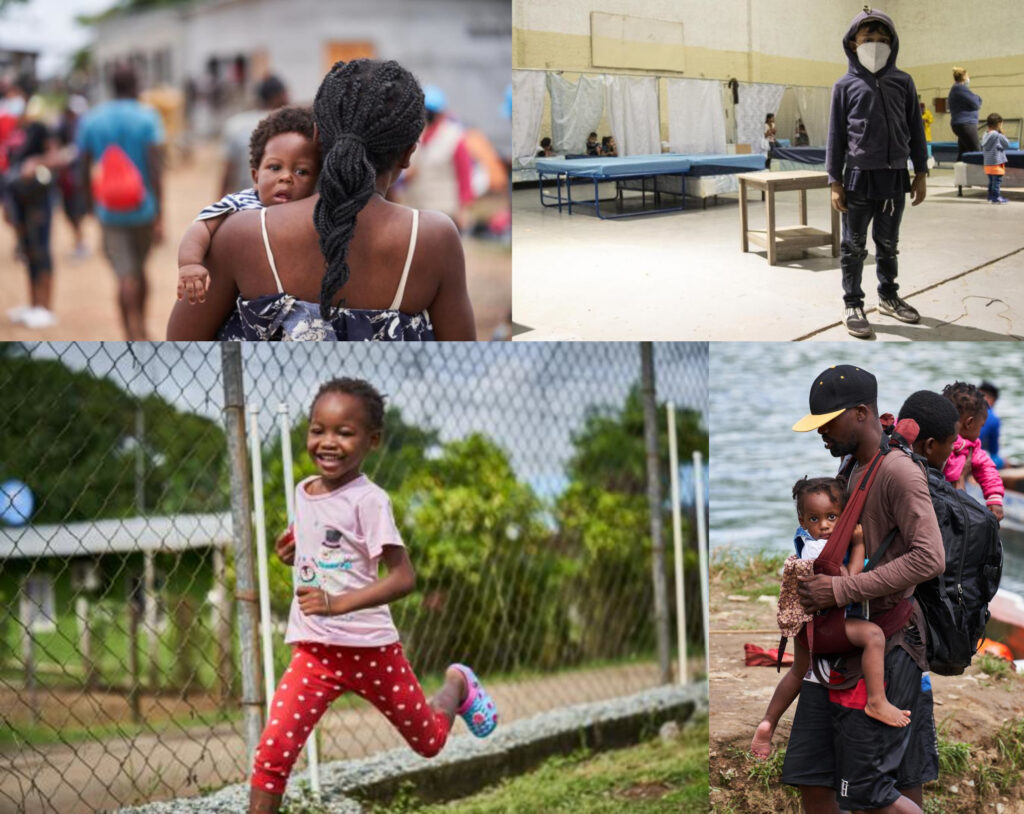PANAMA CITY — The number of children affected by migration in Latin America and the Caribbean is due to hit the 3.5-million-mark next year, UNICEF said Tuesday at the launch of its highest-ever humanitarian appeal for the region. This number, which includes children on the move as well as those living in host communities, represents a 47 percent increase compared to 2021.
“Never before has Latin America and the Caribbean seen so many children – often very young – migrating with their parents,” said Jean Gough, UNICEF’s Regional Director for Latin America and the Caribbean. “Families carry their young children, sometimes babies, for thousands of kilometers, crossing almost the entire continent, in search of a better life. For over a year, COVID-19 and strict lockdowns dragged them further into poverty and left them with no other option but to migrate. Some children are on their own during the journey.
These migrant children are at risk of being exposed to trafficking, exploitation, kidnapping, violence, and even death.”
The combined effects of climate change, extreme weather events, violence, school closures and the socio-economic impacts of the COVID-19 pandemic have further fueled several migration flows across Latin America and the Caribbean, with more and more families with children on the move.
Migration rates from Central America and Mexico towards the United States are significantly on the rise, with about 1.2 million children from migrant families and host communities expected to need humanitarian assistance next year.
In addition, large numbers of Venezuelan families with children continue to migrate across the region. Over 2 million children, including those from Venezuela and those in host communities in neighboring countries are expected to require humanitarian assistance next year.
Nearly 30,000 children, of which three out of four are under the age of 5, have survived the treacherous journey across the Darién jungle that straddles Colombia and Panama. The number of children who crossed the jungle in 2021 is five times more than the four previous years combined. This grueling and extreme ten day crossing which can only be traversed on foot is one of the most dangerous migration routes in the world, with river crossings, dangerous wildlife, possible extortion and lack of drinkable water are the main threats facing migrant children.
Together with partners at the Panamanian border, UNICEF provides safe water, health services, and psychosocial support for children and pregnant women both on the move and from local host communities. From the Colombian side of the border, our teams are also working with local authorities to identify unaccompanied and separated children through mobile units.
“For the first time, all countries in Latin America and the Caribbean are affected by this new wave of child migration –either from within a country of origin, of transit or of destination”, said Gough. “Such a large flow of migrant children is not a cross-border issue between two countries; it’s a continental problem that requires a continental solution. Many governments in the region have limited capacity and expertise to respond to the specific needs of large numbers of migrant children – sometimes even newborns.”
In addition to addressing child migrants’ increasing needs, UNICEF’s humanitarian priorities for 2022 include assisting children and families affected by violence, deepening poverty and the socio-economic impact of the pandemic across the region. UNICEF estimates that, next year, over 57 million people, including 20.8 million children, will need humanitarian assistance in Latin America and the Caribbean. UNICEF is urgently seeking US$750 million to meet the urgent needs of 14 million people across the region.
In Haiti, for example, the situation of children is ever more complex after the August 2021 earthquake, exacerbated by the heightened impacts of urban violence, internal displacement and the reception of returned Haitian migrants in extremely hard conditions, all amid ongoing political and social turmoil. In this country, UNICEF will need US$97 million to respond to the worsening humanitarian situation affecting 2.1 million children.
In 2021, UNICEF reached over 15 million people with humanitarian services and supplies across over 20 countries in Latin America and the Caribbean. This includes at least 13 million children who have benefited from services, ranging from improved access to formal and non-formal education and school materials, and recreational activities. In addition, over 1.6 million people received water, sanitation and hygiene services, and more than 400,000 children and women accessed health care services with UNICEF support.



